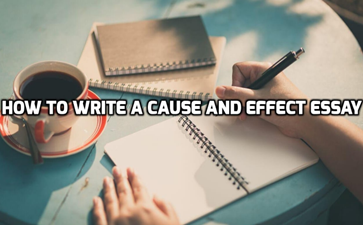偶然在新加坡国立大学网站上发现一个不管是对雅思写作或是研究所学术论文写作都很有帮助的一个指南《大学文化交流》其实这个手册是给大学新生在学术写作,与老师朋友互动,以及如何上台报告方面等的指导。不过我发现其中几个章节的内容非常非常实用!里面用的语言也非常简单明了,非常适用给任何开始学习英文写作的人。以下我以准备雅思写作的方向挑出手册内容重点。需要论文代写?
第一章:Writing an Academic Essay
雅思写作的提示(写作目的),虽然我还没练习到写作任务2,但我想都是要考生讨论支不支持某种观点,要我们讨论(讨论)对某主题的看法,以及支持与反对的原因。
第一步:Analyse the key words in the prompt
找出题目的重点,并且清楚了解意思,才能进一步发展出中心理论
Some words are significant and will need to be defined as part of your essay. In the example below, the key words are in bold:
“ Surrogate motherhood should be legalized in all countries so that everyone has a chance to have their own children. Discuss. ”
You will need a working definition of surrogate motherhood and legalized. A working definition is one that you will work with so you would choose one that suits your thesis.
第二步:Think of Your Thesis
清楚了解并且定义题目的意思之后,就可以开始思索论文的中心思想了(自己的论点),不管你是支持或反对,要清楚订下一个论文的方向(一个中心思想/一篇论文),才能开始延期出版描述思想要点以及相关的举例(主要和次要支持细节),请避免中心思想的定义太过广泛或太过狭窄,阻碍后面文章的脉络发展,请看下面的举例:
It is now time to craft your essay. The most important idea in your essay is your central idea, which is called a thesis. The thesis controls the entire essay — all your main points will be a development of it, and all the minor supporting details will illustrate it. For the example essay prompt above, one thesis statement might be:
“ Surrogate motherhood is a useful(赞成) method for conceiving children, but(但有条件) should only be legalized where it is culturally appropriate to do so and for a clearly specified group of people. ”
Make sure that the thesis expresses a controlling idea that is neither too broad nor too specific to develop effectively and that it does not simply state the obvious.
第三步:Organise Your Material
决定好中心思想后,就可以开始写作了,但不是随意发挥,想怎么写就怎么写,要了解文章脉络要怎么发展和架构才可有效地让别人读得懂。
基本上一般的论文会有两种形式,一种是discurive essay(表达不同意见为主;个人意见为辅;偏中立的论文);另一种是论坛个人意见为主;不同意见为辅;偏主观的论文),我想IELTS大部分是要表明自己的论点为主,因此我在这只说明论证散文的格式,但基本上两种是很相似的,discursive只是少了强调申论个人论点的部分。
Introduction:
- give a brief background to the topic
- address the definition of keywords and issues
- state your thesis
- outline your main points
- delineate your argument showing what your stance is and how you will develop your ideas
- provide a transition into body paragraphs.
Body paragraphs:
- provide a topic sentence which says what the main point of each paragraphs paragraph is
- provide supporting details for your topic sentence
- synthesize what you have read; that is, show what different people think about the same point
- show some critical thinking; that is, tell the readers what you think of what you have read
- present some counterarguments, if you think they are strong ones, to show you understand there is an opposing viewpoint, but…
- provide a refutation showing that you have an argument against that opposing viewpoint, and
Conclusion:
- recap your main points
- reiterate your thesis, and
- give your final word, if any.
基本上我还没开始练习写作第二部分,所以我还不太清楚雅思写作第二部分的方向,上述是非常详细和严谨的论文写法,我也已经把完全不相关的(例如:参考文献)的部分删掉,剩下部分也不见得在雅思写作需要用到,毕竟只是个至少250字的小论文,不过大概的重点就是
起:
- 自己对题目的理解与背景原因解释
- 简单表明自己的观点
- 概述描述选择此观点的原因
主体:
- 在每段主体段落一开头要先写一个主题句,提示读者自己这段要阐明什么。
- 详细叙述主题并且提供例子
- 找出跟自己不一样的论点有哪些?你觉得如何?为什么?
- 正反综合意见
结语:
再次申明和整理自己的论点



